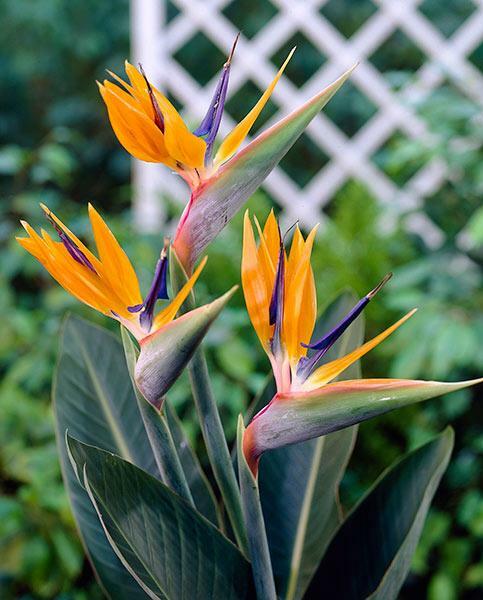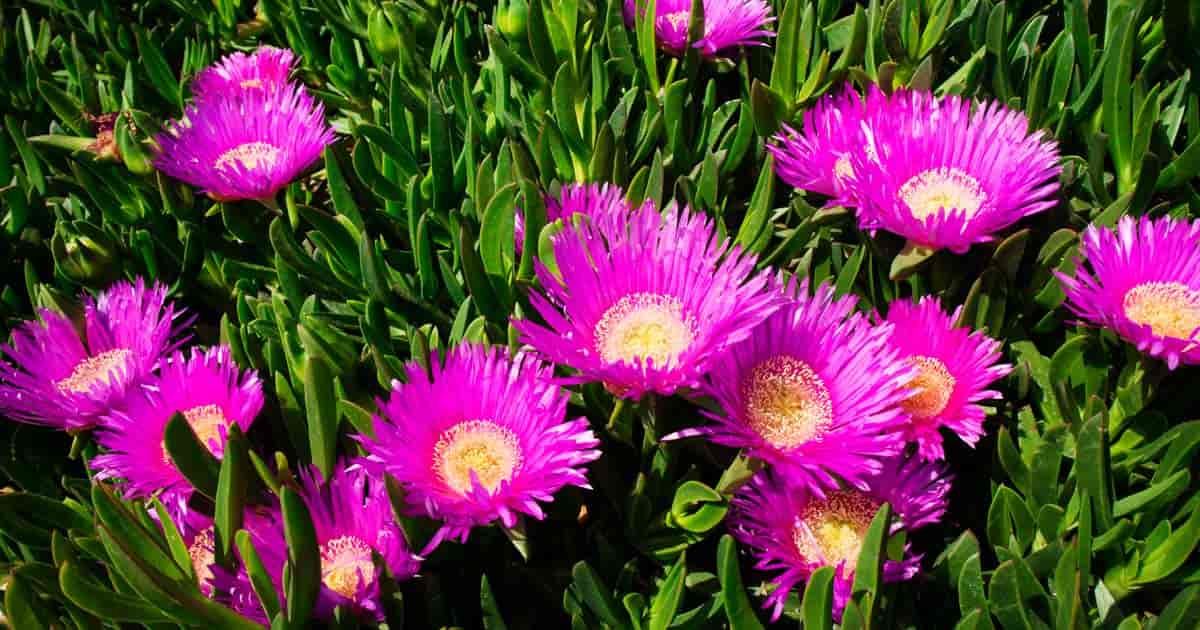Africa is home to so many species of exotic flowers that even a lifetime would not be enough to explore them. Many of them are yet to be studied and grouped. South Africa is very popular for the diversity and beauty of its flora. It is home to around 10 percent of all the flowering plant species that are known, of which around 80 percent are native to the country. Some of the native flowering plant species of Africa include protea, impala lily, flame lily, leopard orchid, amaryllis, ice plants, freesias, leopard orchid, African daisy, bird of paradise, gazania, and African iris. Many of the species have become ornamental plants in the United States.
Strelitzia Reginae

Strelitzia reginae is a flowering plant native to South Africa. It belongs to the family, Strelitziaceae and the order Zingiberales. It is one of the most popular perennial plants. It was first introduced to Europe in the year 1773, and then to other parts of the world. Its blooming time is autumn, winter, and spring. Strelitzia is a low-maintenance plant and is easy to care for. It can grow up to a height of six feet. Its large banana-like leaves are about 28 inches long. The beak-like casing from which the flower comes out is known as the spathe, which is at right angles to the stem. Due to this, the flower looks like a bird’s head. The flower has three orange sepals and three blue petals. The flowering plant is known by various names such as Strelitzia, Crane Flower, or Bird of Paradise.
Spathodea Campanulata

Spathodea campanulata is one of the most spectacular flowering plants that is indigenous to the tropical dry forests of West Africa. It belongs to the family Bignoniaceae and order Lamiales. The leaves grow about one to two feet long and have a bronzy colour. The horn-shaped buds that appear in large clusters, are produced at the branches’ tips. The lowest tier buds flare up into red orange (yellow in some cultivars) tulip-like bells. They also have crinkled margins. The flowers grow about 10 centimetres long. The tree flowers throughout the year, but the peak blooming season is spring. The plant is popular by the names fountain tree, African tulip tree, pichkari, or Nandi flame.
Carpobrotus Edulis

Carpobrotus edulis is a flowering plant native to the coastal areas of South Africa. It belongs to the family Aizoaceae and order Caryophyllales. Common names for it are hottentot, ice plant, highway ice plant or pigface. The flowers are large, daisy-like and purple or dark pink in color. They bloom especially during late winter-spring. The ground-hugging succulent perennial has succulent leaves which are used as an antiseptic to treat sore throat.
Zantedeschia Aethiopica

Zantedeschia aethiopica plant is a herbaceous or semi-evergreen perennial that comes from the family Araceae and order Alismatales. It is endemic to South Africa and widely naturalised throughout the tropics. It grows in marshy areas. It is one of the most widely known plants. The perennial grows up to 3 feet in height. The leaves are long, spongy, and dark green, and shaped like an arrowhead. The flower is characterised by a light yellow spadix with many tiny flowers surrounded by a brilliant white, showy leaf-like bract or spathe. The blooming seasons are spring, summer, and autumn. It is also known as Arum Lily or Calla Lily.
